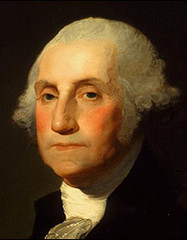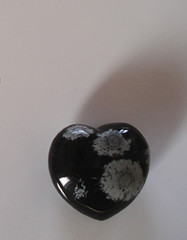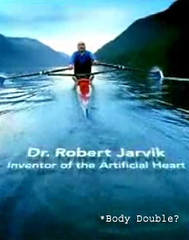Last year, President George W. Bush traveled to the Mount Vernon estate of George Washington in honor of Presidents Day, which was chosen as a date to honor the birthday of President Washington.
In truth, Washington’s birthday is Feb. 22 (Feb. 11 if you consider the Julian calendar used when he was alive). Along with Washington’s birthday, many consider it a celebration of President Lincoln’s birthday as well, which is Feb. 12. A few even consider it a celebration of all Presidents.
Of course, nowadays, today is best known for retail advertising campaigns and a growing number of newspapers that lament how Presidents Day lost its meaning.
You see, it was really intended to celebrate Washington’s birthday as the first President of the United States. President Lincoln had earned his own day. That is, until HR 15951 was passed in 1968 in an attempt to simplify federal holidays. But that’s the thing.
Representations don’t always have as much value as the real thing.
We learned it here in Nevada too. Ever since the state moved Nevada Day from Oct. 31 to the last Friday of the month, it too has lost some luster. Lighter events are now scattered throughout the long weekend, which is used by Nevadans to prepare for Halloween as much as anything. I guess it seems fitting that this year’s theme has something to do with aliens. The outer space kind.
This year, President George W. Bush is in Africa. And, when you look at the newspapers, there seems to be much less about a national celebration than some other topics, including political endorsements and recognizing new nations, which has drowned out most mentions, even the laments.
Not so much for me. It still rings true as George Washington’s birthday, honoring the first President of the United States. Even while writing about why Benjamin Franklin would have made a great blogger, it didn’t hit me to post it (maybe sometime in the weeks ahead).
Today belongs to Washington. Another founding father, who despite little formal education, would have likely participated in social media, writing what would one day be public letters to his colleagues from Mount Vernon. Oh right, he did do exactly that.
Maybe that’s why we should remember him today, and our founding fathers more often. These people weren’t trying to be “anything” like we sometimes see in politics today. They were trying to do something. But maybe that’s the point. Representations don’t always have as much value as the real thing.

In truth, Washington’s birthday is Feb. 22 (Feb. 11 if you consider the Julian calendar used when he was alive). Along with Washington’s birthday, many consider it a celebration of President Lincoln’s birthday as well, which is Feb. 12. A few even consider it a celebration of all Presidents.
Of course, nowadays, today is best known for retail advertising campaigns and a growing number of newspapers that lament how Presidents Day lost its meaning.
You see, it was really intended to celebrate Washington’s birthday as the first President of the United States. President Lincoln had earned his own day. That is, until HR 15951 was passed in 1968 in an attempt to simplify federal holidays. But that’s the thing.
Representations don’t always have as much value as the real thing.
We learned it here in Nevada too. Ever since the state moved Nevada Day from Oct. 31 to the last Friday of the month, it too has lost some luster. Lighter events are now scattered throughout the long weekend, which is used by Nevadans to prepare for Halloween as much as anything. I guess it seems fitting that this year’s theme has something to do with aliens. The outer space kind.
This year, President George W. Bush is in Africa. And, when you look at the newspapers, there seems to be much less about a national celebration than some other topics, including political endorsements and recognizing new nations, which has drowned out most mentions, even the laments.
Not so much for me. It still rings true as George Washington’s birthday, honoring the first President of the United States. Even while writing about why Benjamin Franklin would have made a great blogger, it didn’t hit me to post it (maybe sometime in the weeks ahead).
Today belongs to Washington. Another founding father, who despite little formal education, would have likely participated in social media, writing what would one day be public letters to his colleagues from Mount Vernon. Oh right, he did do exactly that.
Maybe that’s why we should remember him today, and our founding fathers more often. These people weren’t trying to be “anything” like we sometimes see in politics today. They were trying to do something. But maybe that’s the point. Representations don’t always have as much value as the real thing.























